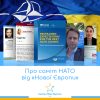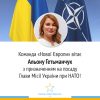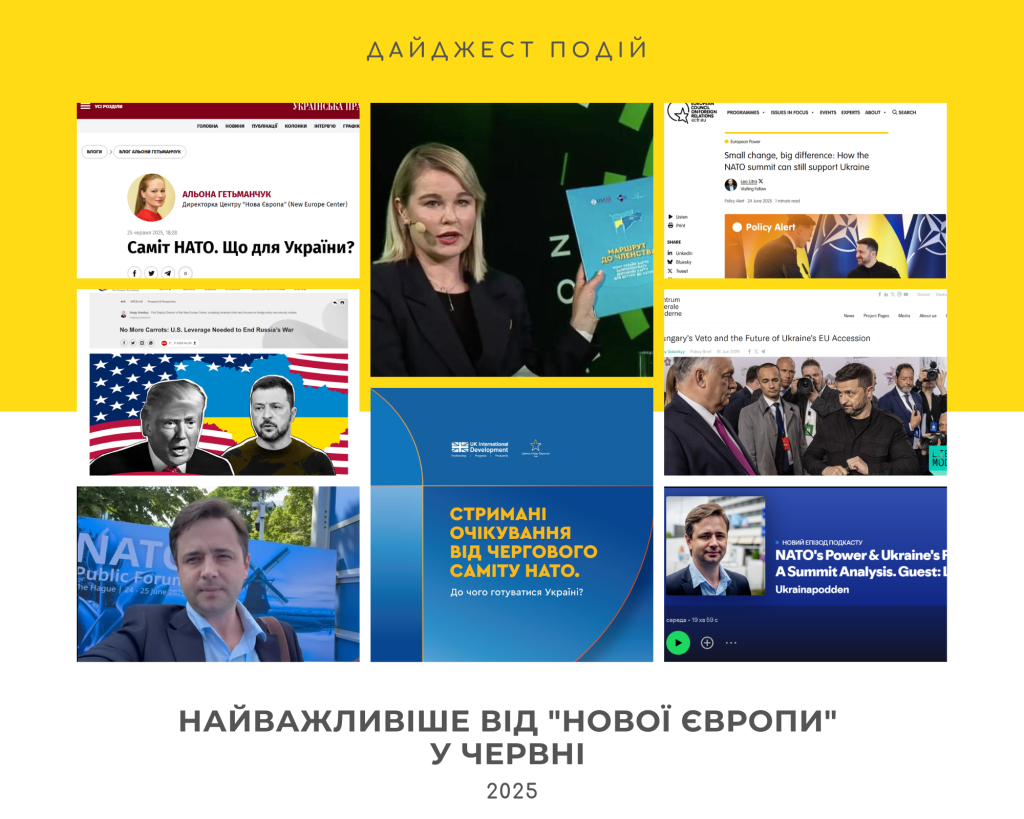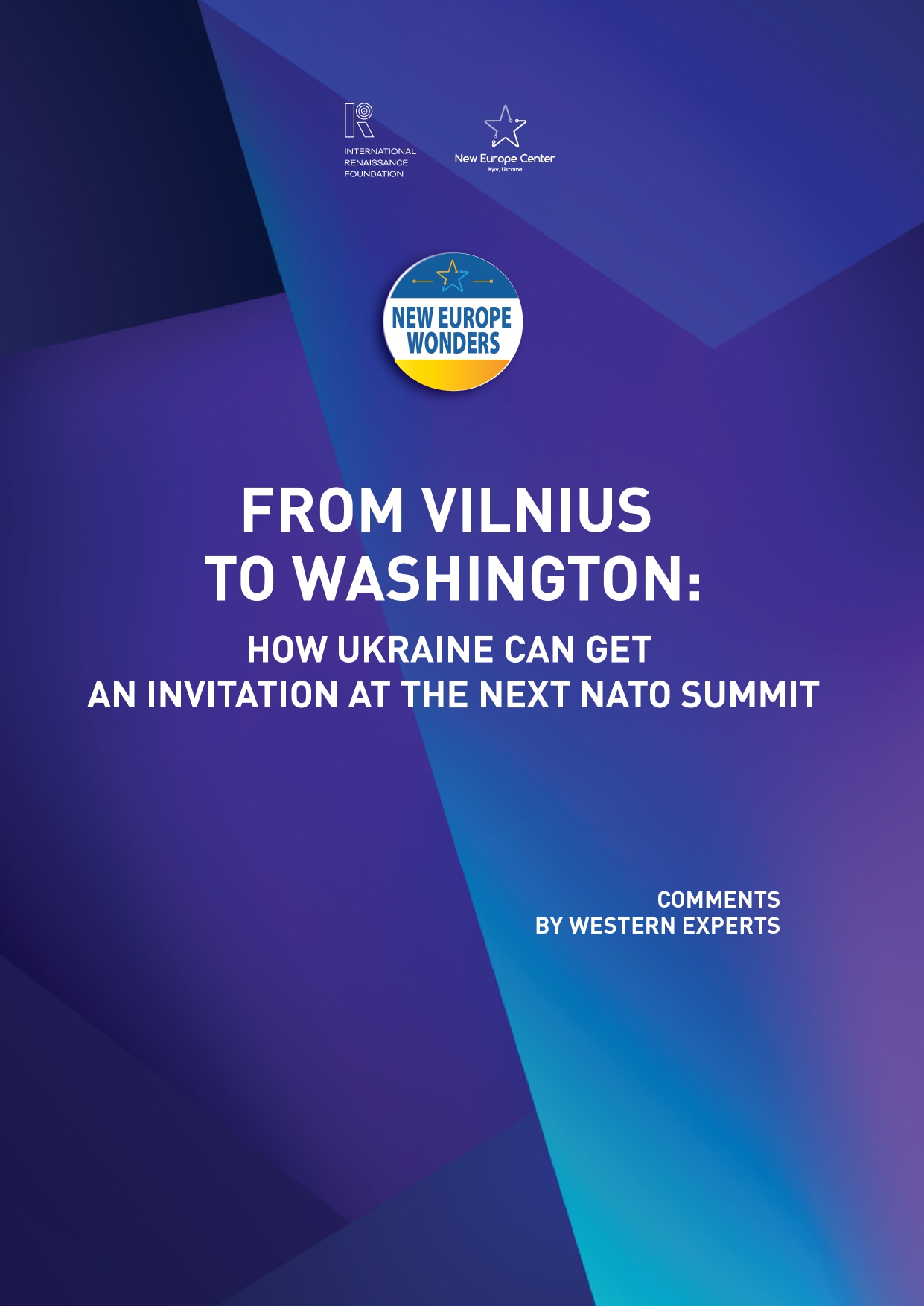
How to increase Ukraine’s chances to get the invitation at NATO’s summit in Washington next year? This question was addressed to renowned Western experts as part of our regular rubric “New Europe wonders…”. Ukraine’s objective was to secure a political invitation to the Alliance during the recent Vilnius Summit. The next NATO summit is scheduled for July 2024. One of the reasons why Ukrainians didn’t achieve their goal was that the Ukrainian authorities initiated relevant consultations with NATO partners too late. Many observers (some intentionally) misinterpreted Kyiv’s request, claiming that Ukraine was seeking immediate membership instead of an invitation. If Ukraine aims to receive a positive response in a year’s time, it is crucial to commence the necessary groundwork right now. The advice from Western experts in this regard could prove particularly valuable for all decision-makers in spheres of Ukraine’s security and foreign policy.
NATO SUMMIT IN WASHINGTON.
TOP 5 CONCLUSIONS FOR UKRAINE
1. Risks of Non-Accession.
The decision in Washington will largely depend on the success of Ukraine’s counteroffensive, the overall situation on the frontlines, and Russia’s weaknesses. However, the discussion should not only focus on the risks of Ukraine’s NATO membership but also on the risks of Ukraine remaining outside of NATO. Without membership, the region will remain vulnerable, with instability and chaos becoming defining characteristics.
2. Launch informal work now.
Informal negotiations on the “conditions” or “criteria” for the invitation should start immediately (agreeing on a fast track accession once these conditions are met). Ukraine should collaborate with Central European and Scandinavian countries to create a kind of “lobbying group” that promotes the idea of Ukraine’s NATO membership. Undoubtedly, it is important to expand the circle of friends in both US parties – Democratic and Republican.
3. Find the relevant arguments.
It is essential for Ukraine’s prospective allies to understand that Ukraine’s NATO membership is not a burden (or ‘trap’) but an advantage. For instance, the United States could embrace the argument that Ukrainian combat experience aligns with NATO’s strategic vision. According to this defense plan, Alliance countries should be ready to deploy 100,000-strong combat-ready troops within 10 days. The first line of defense will obviously be European, and Ukraine can play a crucial role here.
4. Benefit from the NATO-Ukraine Council.
This joint body, launched during the Vilnius Summit in July 2023, should be more than just a political forum. It can become a platform for discussing and agreeing on the necessary criteria that will eventually lead to an invitation and then Ukraine’s NATO membership.
5. Take advantage of the opportunities during the interim period.
The USA currently insists that Ukraine receives multilateral support to strengthen its defense capabilities without focusing on the issue of NATO membership. The question of membership (or even invitation) to the Alliance, as believed in Washington, can only arise after the end of the war. However, Ukraine should enhance its compatibility with NATO in various spheres right now to join the Alliance quickly as soon as circumstances permit. All security arrangements (assurances, commitments, “guarantees”) proposed as NATO’s membership substitutes should only have an interim, temporary character.
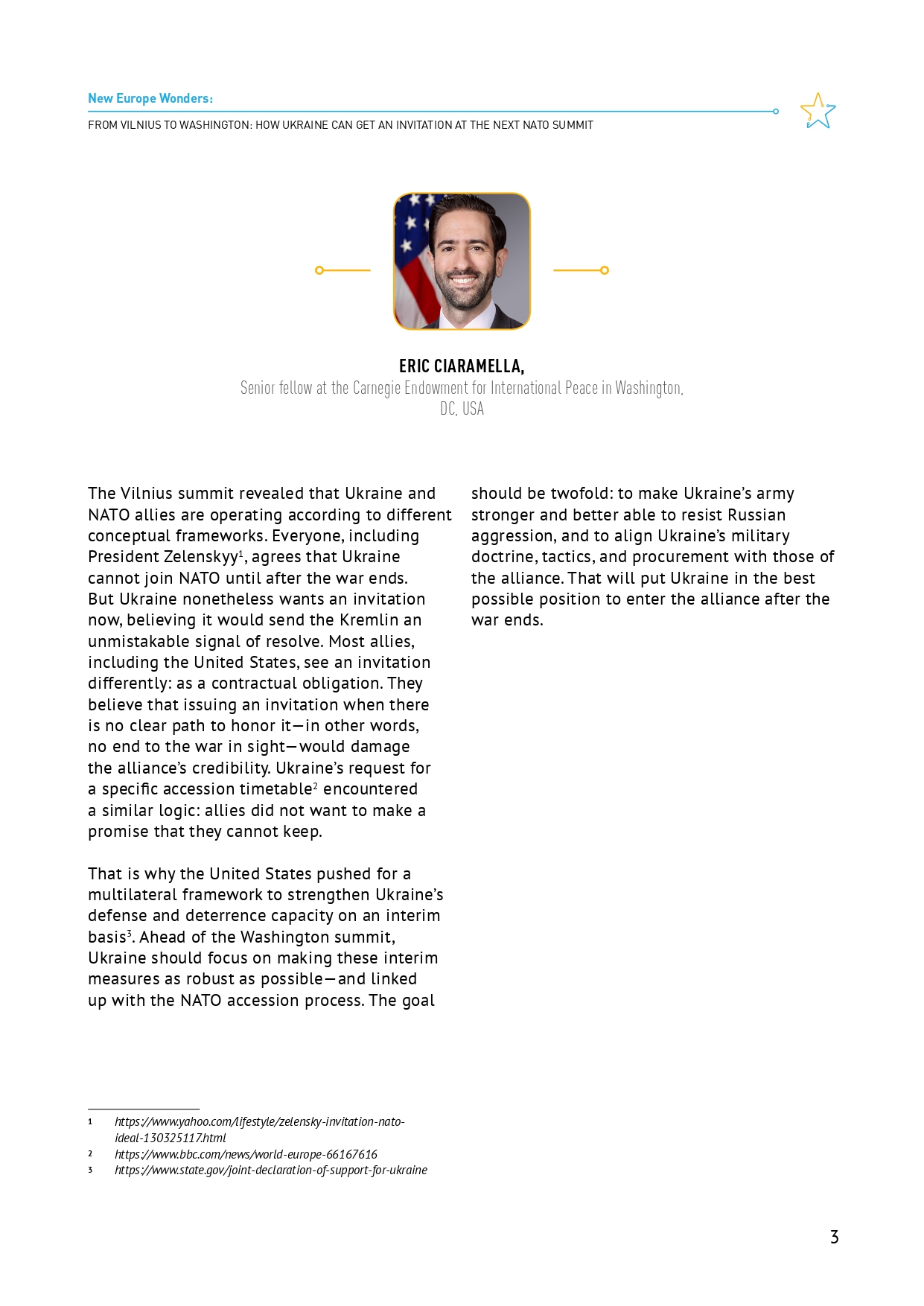
Eric Ciaramella, Senior fellow at the Carnegie Endowment for International Peace in Washington, DC, USA
The Vilnius summit revealed that Ukraine and NATO allies are operating according to different conceptual frameworks. Everyone, including President Zelenskyy1, agrees that Ukraine cannot join NATO until after the war ends. But Ukraine nonetheless wants an invitation now, believing it would send the Kremlin an unmistakable signal of resolve. Most allies, including the United States, see an invitation differently: as a contractual obligation. They believe that issuing an invitation when there is no clear path to honor it—in other words, no end to the war in sight—would damage the alliance’s credibility. Ukraine’s request for a specific accession2 timetable encountered a similar logic: allies did not want to make a promise that they cannot keep.
That is why the United States pushed for a multilateral framework to strengthen Ukraine’s defense and deterrence capacity on an interim basis3. Ahead of the Washington summit, Ukraine should focus on making these interim measures as robust as possible—and linked up with the NATO accession process. The goal should be twofold: to make Ukraine’s army stronger and better able to resist Russian aggression, and to align Ukraine’s military doctrine, tactics, and procurement with those of the alliance. That will put Ukraine in the best possible position to enter the alliance after the war ends.
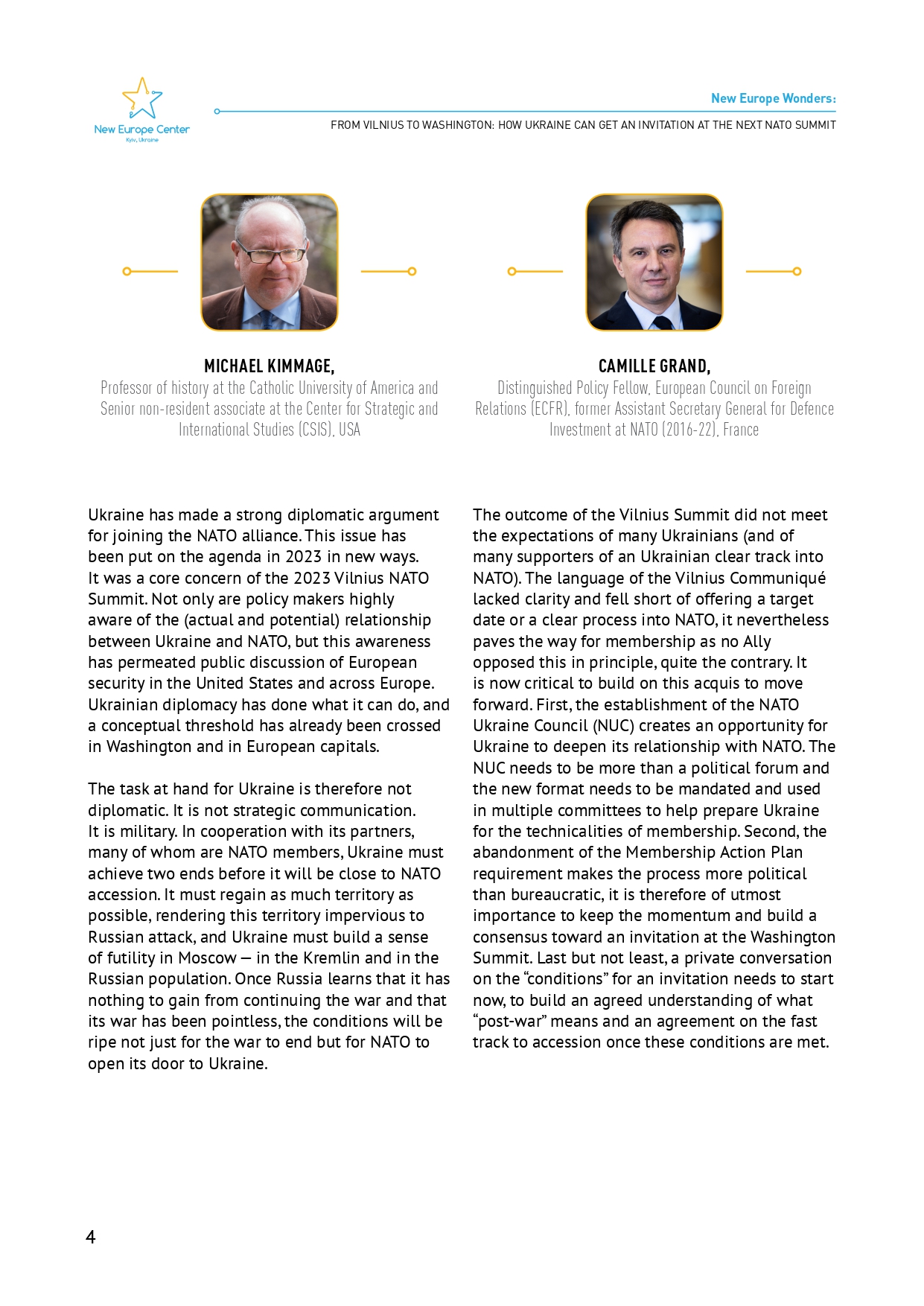
Michael Kimmage, Professor of history at the Catholic University of America and Senior non-resident associate at the Center for Strategic and International Studies (CSIS), USA
Ukraine has made a strong diplomatic argument for joining the NATO alliance. This issue has been put on the agenda in 2023 in new ways. It was a core concern of the 2023 Vilnius NATO Summit. Not only are policy makers highly aware of the (actual and potential) relationship between Ukraine and NATO, but this awareness has permeated public discussion of European security in the United States and across Europe. Ukrainian diplomacy has done what it can do, and a conceptual threshold has already been crossed in Washington and in European capitals.
The task at hand for Ukraine is therefore not diplomatic. It is not strategic communication. It is military. In cooperation with its partners, many of whom are NATO members, Ukraine must achieve two ends before it will be close to NATO accession. It must regain as much territory as possible, rendering this territory impervious to Russian attack, and Ukraine must build a sense of futility in Moscow – in the Kremlin and in the Russian population. Once Russia learns that it has nothing to gain from continuing the war and that its war has been pointless, the conditions will be ripe not just for the war to end but for NATO to open its door to Ukraine.
Camille Grand, Distinguished Policy Fellow, European Council on Foreign Relations (ECFR), former Assistant Secretary General for Defence Investment at NATO (2016-22), France
The outcome of the Vilnius Summit did not meet the expectations of many Ukrainians (and of many supporters of an Ukrainian clear track into NATO). The language of the Vilnius Communiqué lacked clarity and fell short of offering a target date or a clear process into NATO, it nevertheless paves the way for membership as no Ally opposed this in principle, quite the contrary. It is now critical to build on this acquis to move forward. First, the establishment of the NATO Ukraine Council (NUC) creates an opportunity for Ukraine to deepen its relationship with NATO. The NUC needs to be more than a political forum and the new format needs to be mandated and used in multiple committees to help prepare Ukraine for the technicalities of membership. Second, the abandonment of the Membership Action Plan requirement makes the process more political than bureaucratic, it is therefore of utmost importance to keep the momentum and build a consensus toward an invitation at the Washington Summit. Last but not least, a private conversation on the “conditions” for an invitation needs to start now, to build an agreed understanding of what “post-war” means and an agreement on the fast track to accession once these conditions are met.

Pierre Haroche, Lecturer in International Relations and International Security at Queen Mary University of London, France
One of the main reasons for Washington’s reluctance towards Ukraine’s NATO membership is that, once in NATO, Ukraine would essentially be a burden to US forces in the absence of a credible European ‘pillar’ within the Alliance. For US leaders, this prospect is all the more worrying, given that both Republicans and Democrats are anxious to finally make the ‘pivot’ towards Asia that would enable the US to focus its efforts on deterring any Chinese aggression towards Taiwan.
The good news is that this obstacle is not absolute and can be mitigated. Within NATO, Ukraine’s advocates would have to ensure that the Alliance’s first line of defence—the 100,000 troops supposed to be combat-ready in fewer than 10 days under NATO’s force model—would be predominantly European. Besides, in anticipation of Ukraine’s accession to the EU, an association agreement would integrate the Ukrainian defence industry into the EU’s defence technological and industrial base.
These measures would signify that Ukraine’s NATO accession is not a ‘trap’ for US forces, but a decisive piece in a European bulwark under construction, and that treating Ukraine differently from European allies would be pointless.
Ulrich Speck, Independent foreign policy analyst, Germany
The most promising way towards a political invitation to join NATO would be a military victory by Ukraine. The balance of power should look favorable to Ukraine: a strong Ukraine and a weak Russia.
Yet that’s not sufficient. Two fears must be addressed. By far the biggest fear in Washington and Berlin is a Russian escalation, leading to war with the West. The other fear is that Ukraine may not act responsibly in dealing with Russia.
But the conversation should not just be about the risks of membership – also about the risks of no membership for Ukraine. It doesn’t get into NATO, Ukraine must arm itself, probably including with nuclear weapons, or the whole region descends into full instability and potentially chaos.
Kyiv should work with Central Europeans and Scandinavians to build a lobby bloc on behalf of Ukraine. And work with Democrats and Republicans in the US.
The moment many in the West fear is when Russia fully realizes that it can’t subjugate Ukraine again. That’s why it’s important to make NATO membership a process, so that crossing the line towards membership isn’t such a big deal anymore.
Ultimately, Ukraine gets the NATO membership when the conviction prevails that Russia would not risk a war with the US over Ukraine – and that the risks of no membership for Ukraine are far higher than the risks of membership.
1 https://www.yahoo.com/lifestyle/zelensky-invitation-nato-ideal-130325117.html
2 https://www.bbc.com/news/world-europe-66167616
3 https://www.state.gov/joint-declaration-of-support-for-ukraine
PDF-version is avialable here.
The material prepared with the support of the International Renaissance Foundation. The material reflects the position of the authors and does not necessarily coincide with the position of the International Renaissance Foundation.



